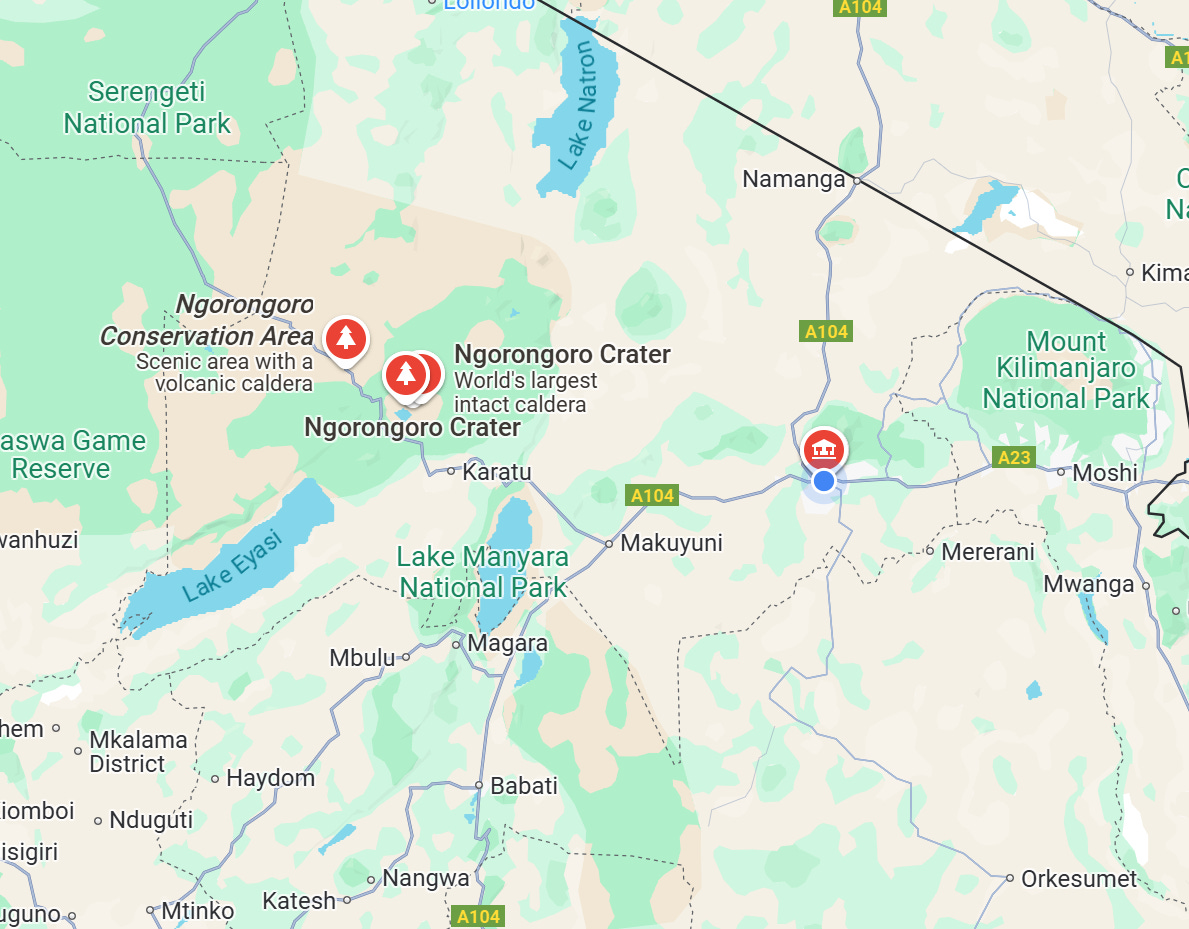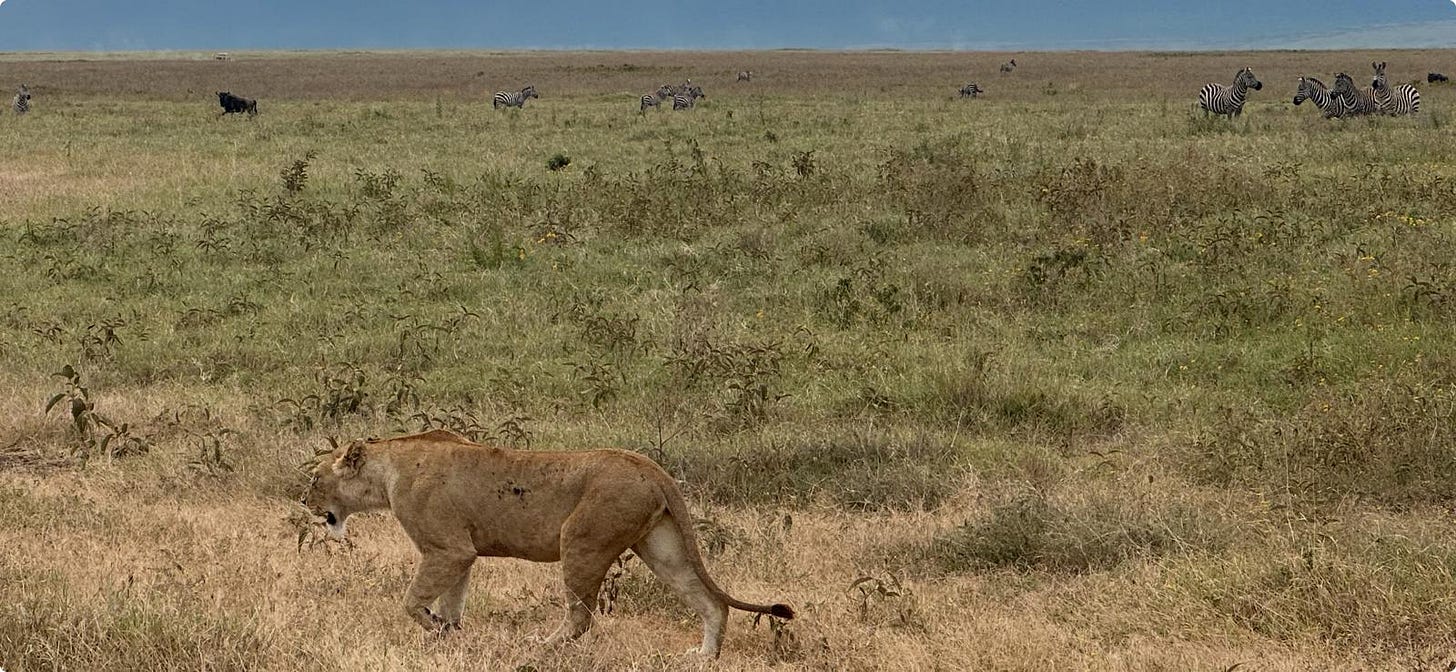By Peter A. McCullough, MD, MPH
The Ngorongoro (means ringing cowbells from Maasai language) Crater, a UNESCO World Heritage Site, was formed by a massive volcanic eruption and subsequent collapse, creating a large volcanic caldera. The eruption occurred about 2.5 million years ago, ejecting magma and ash, and the resulting collapse created a large depression, spanning over 260 square kilometers and reaching a depth of 610 meters, according to the Ngorongoro Conservation Area Authority.
It is likely that wildlife within the crater have their entire lifespan within this ecosystem. Our highlight was coming up on a solo lioness in broad daylight moving along the edge of a field and watch the reaction of a herd of zebras. With excellent eyesight, the zebras activated one another and formed a unified front to face the lioness traversing past them.
It was clear she was not hunting but it was also apparent that the zebras were ready to confront a single lioness. You will also notice our lioness looks to have taken a past horn to her left side serving as a reminder that each attack on prey is not without risk of injury or even death.
Our South African guide Andy Cook (shown playing drums with Tanzanites at a tourist trap) explained that if a hunting team of six or more lions were spotted, it would have been a different response from the zebras who would have hightailed it in the other direction!
Please subscribe to FOCAL POINTS as a paying ($5 monthly) or founder member so we can continue to bring you the truth.
Peter A. McCullough, MD, MPH
President, McCullough Foundation













